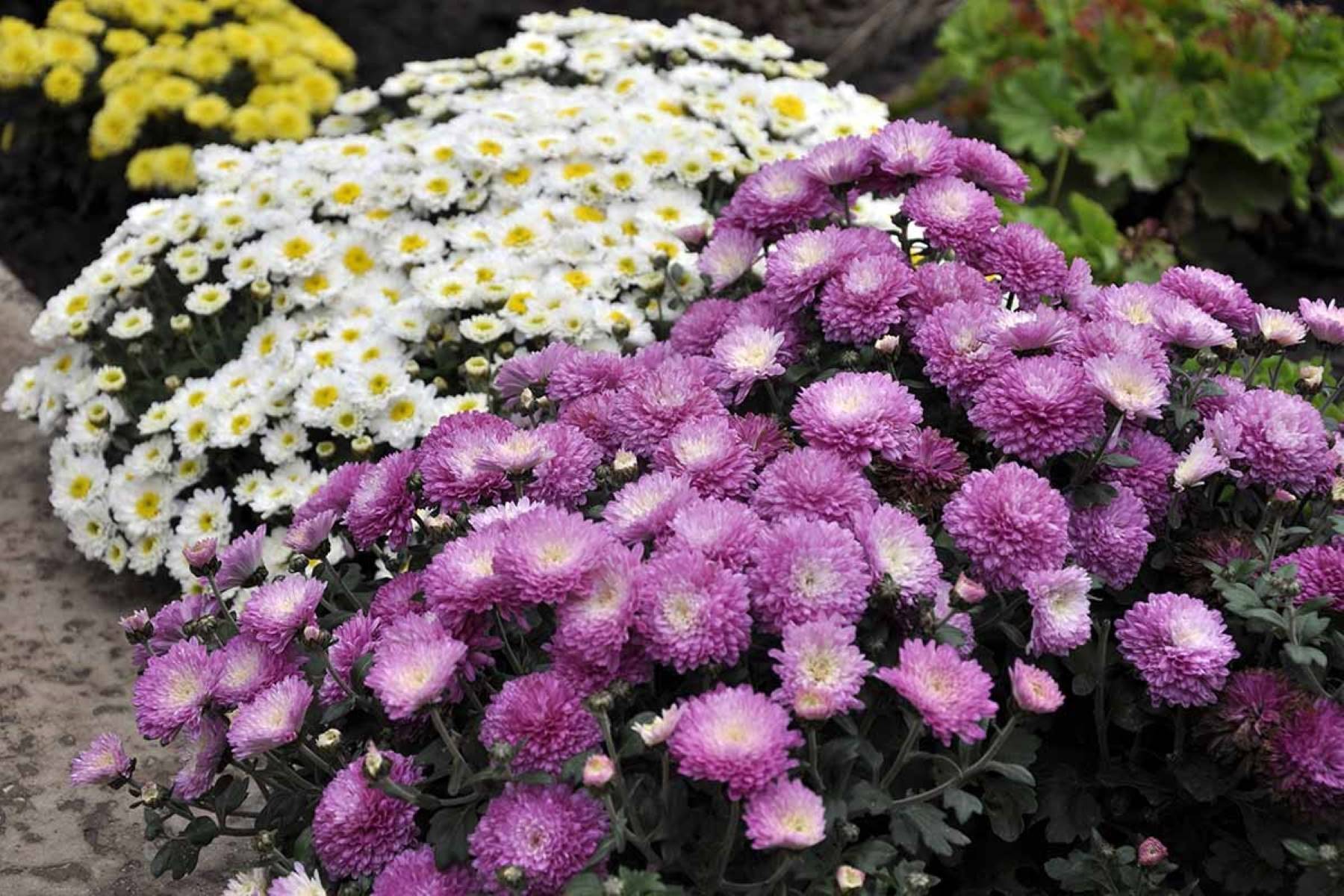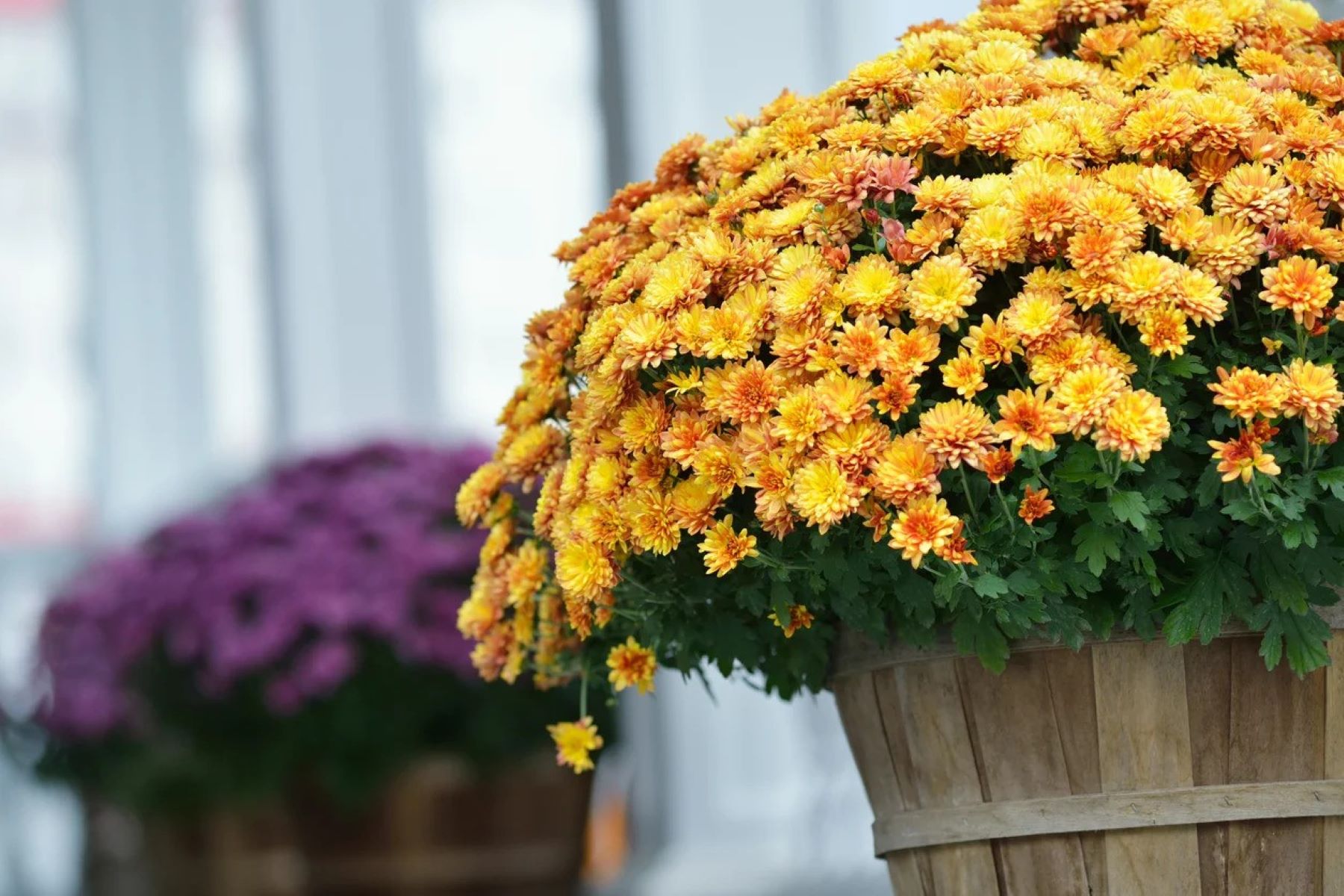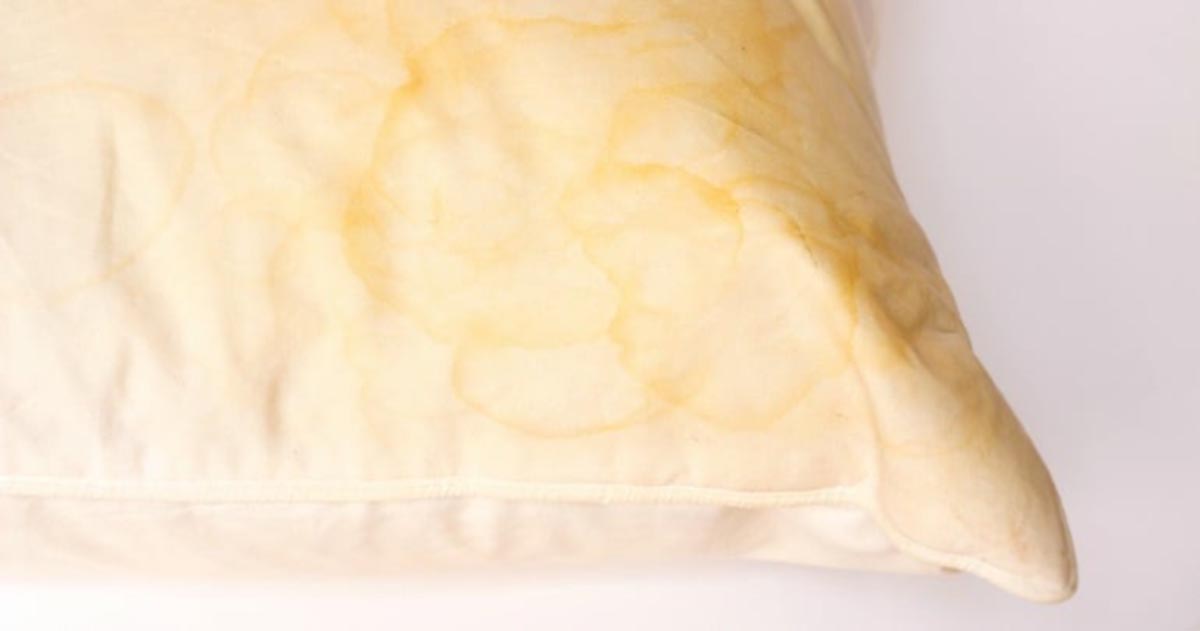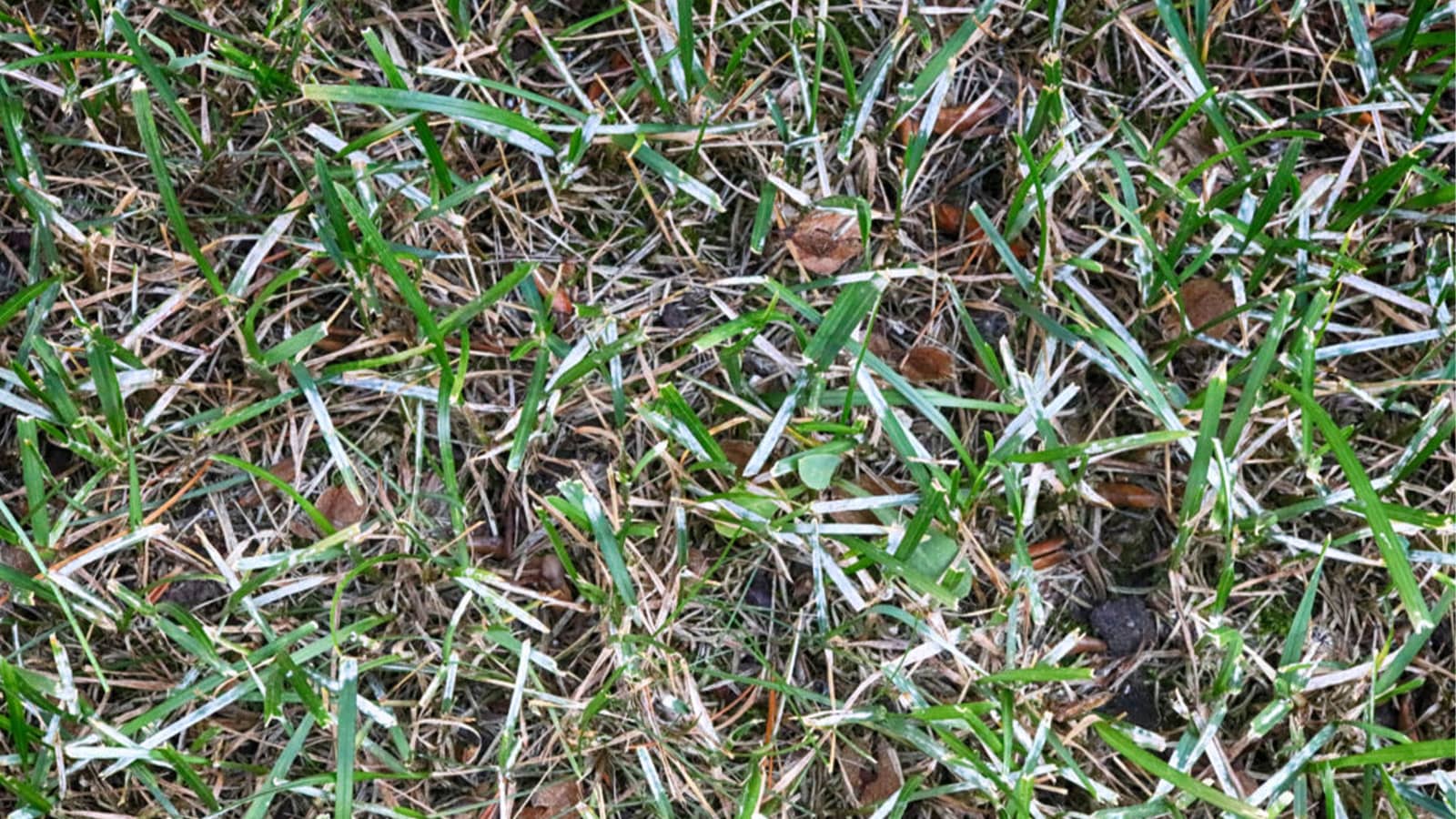Home>Gardening & Outdoor>Plant Care & Gardening Tips>Why Are My White Mums Turning Purple


Plant Care & Gardening Tips
Why Are My White Mums Turning Purple
Published: February 26, 2024
Discover expert plant care and gardening tips to understand why your white mums are turning purple. Learn how to prevent and treat this common issue.
(Many of the links in this article redirect to a specific reviewed product. Your purchase of these products through affiliate links helps to generate commission for Storables.com, at no extra cost. Learn more)
Introduction
White mums, also known as chrysanthemums, are prized for their delicate beauty and vibrant blooms. However, it can be disconcerting for gardeners to notice their white mums turning purple. This unexpected transformation can leave many wondering about the underlying causes and potential remedies.
In this comprehensive guide, we will delve into the intriguing phenomenon of white mums turning purple. By exploring the various factors that contribute to this color change, we aim to equip gardeners with the knowledge and insights needed to address this issue effectively. Whether you are a seasoned horticulturist or a novice gardener, understanding the reasons behind the purple hue of your white mums is crucial for maintaining their health and vitality.
Join us as we unravel the mysteries behind this captivating botanical conundrum and discover the environmental, nutritional, and genetic influences that can lead to the surprising shift in coloration. By the end of this exploration, you will be empowered with practical tips for preventing and addressing the purple transformation of your beloved white mums, ensuring that they continue to grace your garden with their enchanting allure.
Key Takeaways:
- Embrace the beauty of white mums by understanding their color changes, caused by factors like temperature, light, nutrients, and genetics. With care and knowledge, you can keep your mums vibrant and captivating.
- Protect your white mums from turning purple by creating a stable environment, addressing nutrient deficiencies, and selecting resilient cultivars. With proactive care, you can enjoy the enduring allure of these beloved flowers.
Read more: Why Are Mums Turning Brown
Understanding the Causes of Purple Mums
The phenomenon of white mums turning purple can be attributed to a variety of factors, encompassing environmental influences, nutrient deficiencies, and genetic predispositions. Understanding these causes is essential for effectively addressing the color change and preserving the vibrancy of these beloved flowers.
Environmental Factors
One of the primary contributors to the purple discoloration of white mums is environmental stress. Exposure to extreme temperatures, particularly cold snaps during the growing season, can trigger the production of anthocyanins, the pigments responsible for the purple coloration. Additionally, fluctuations in light exposure and inadequate sunlight can prompt the plants to produce higher levels of anthocyanins, leading to the unexpected change in petal color.
Nutrient Deficiency
Another significant factor that can lead to white mums turning purple is nutrient deficiency, particularly in phosphorus. Insufficient phosphorus levels in the soil can impede the plant's ability to regulate its pigment production, resulting in the accumulation of anthocyanins and the subsequent manifestation of purple hues in the petals. Furthermore, imbalances in other essential nutrients, such as potassium and magnesium, can also contribute to this color transformation.
Genetic Factors
In some cases, the genetic makeup of the chrysanthemum cultivar can predispose it to developing purple hues, especially under specific environmental conditions. Certain varieties may possess genetic traits that make them more susceptible to color changes, even when grown under optimal conditions. Understanding the genetic predispositions of different chrysanthemum cultivars is crucial for anticipating and managing potential color variations.
By comprehensively examining these underlying causes, gardeners can gain valuable insights into the intricate mechanisms that govern the coloration of white mums. Armed with this knowledge, they can proactively address the contributing factors and implement targeted strategies to maintain the desired white hue of their mums, ensuring a visually stunning display in their garden.
Read more: Why Are My Mums Wilting
Environmental Factors
Environmental factors play a pivotal role in the coloration of white mums, often influencing the manifestation of purple hues in their delicate petals. The interplay between temperature, light exposure, and overall environmental stress can significantly impact the pigment production within the flowers, leading to the unexpected transformation in color.
Temperature Fluctuations: White mums are particularly sensitive to temperature variations, especially during critical stages of their growth and development. Exposure to sudden cold snaps or fluctuations in temperature can trigger the activation of anthocyanin production, the pigments responsible for the purple coloration. This physiological response serves as a protective mechanism for the plant, helping it adapt to environmental stressors. Consequently, the accumulation of anthocyanins in the petals can lead to the striking emergence of purple hues, altering the flowers' appearance.
Light Exposure: Adequate sunlight is essential for the optimal growth and coloration of white mums. However, fluctuations in light exposure can prompt the plants to produce higher levels of anthocyanins, leading to the unexpected change in petal color. Insufficient sunlight or irregular light patterns can disrupt the delicate balance of pigment production, resulting in the pronounced manifestation of purple tones in the blooms. Understanding the light requirements of white mums and ensuring consistent, appropriate light exposure is crucial for maintaining their desired coloration.
Overall Environmental Stress: Environmental stressors, such as extreme weather conditions, fluctuations in humidity, and exposure to pollutants, can exert significant pressure on white mums, influencing their physiological processes. These stressors can trigger the activation of defense mechanisms within the plants, including the production of anthocyanins as a response to environmental challenges. As a result, the petals may undergo a remarkable shift in color, reflecting the plant's adaptive strategies in the face of environmental adversity.
By recognizing the profound impact of environmental factors on the coloration of white mums, gardeners can implement proactive measures to mitigate potential stressors and create optimal growing conditions for these exquisite flowers. Through careful attention to temperature regulation, light management, and overall environmental well-being, gardeners can nurture their white mums and preserve their pristine beauty, ensuring a captivating display of radiant blooms in their garden.
Nutrient Deficiency
Nutrient deficiency, particularly in phosphorus, can significantly impact the coloration of white mums, potentially leading to the emergence of purple hues in their petals. Phosphorus plays a crucial role in various physiological processes within the plant, including pigment regulation and overall metabolic functions. When white mums experience inadequate phosphorus levels in the soil, their ability to maintain the desired petal coloration may be compromised, resulting in the unexpected manifestation of purple tones.
Phosphorus deficiency can disrupt the intricate balance of pigment production, leading to the accumulation of anthocyanins in the petals. Anthocyanins are responsible for the vibrant hues observed in many flowers, including the striking purples that can emerge in white mums under nutrient stress. As the plants struggle to regulate their pigment synthesis in the absence of sufficient phosphorus, the petals may undergo a remarkable transformation, reflecting the physiological consequences of nutrient deficiency.
In addition to phosphorus, imbalances in other essential nutrients, such as potassium and magnesium, can also contribute to the color transformation observed in white mums. These nutrients play integral roles in the plant's metabolic processes and pigment regulation, and their deficiency can disrupt the delicate equilibrium necessary for maintaining the desired petal coloration. As a result, the flowers may exhibit unexpected shifts in color, signaling the underlying nutrient imbalances affecting their overall health and vitality.
Addressing nutrient deficiency in white mums requires a multifaceted approach, encompassing soil analysis, targeted fertilization, and strategic nutrient supplementation. Conducting a thorough soil assessment can provide valuable insights into the specific nutrient deficiencies present, guiding the formulation of an effective fertilization regimen tailored to the plants' needs. By incorporating phosphorus-rich fertilizers and ensuring a balanced supply of essential nutrients, gardeners can support the optimal growth and coloration of their white mums, mitigating the risk of purple discoloration due to nutrient deficiencies.
By recognizing the profound impact of nutrient deficiency on the coloration of white mums, gardeners can proactively address these underlying imbalances, fostering a nutrient-rich environment that promotes the vibrant, pristine blooms characteristic of these beloved flowers. Through diligent soil management and targeted nutrient supplementation, gardeners can safeguard the health and beauty of their white mums, ensuring a captivating display of radiant blooms in their garden.
Genetic Factors
Genetic factors play a pivotal role in influencing the coloration of white mums, contributing to the intriguing phenomenon of these beloved flowers turning purple. The genetic makeup of chrysanthemum cultivars can significantly impact their predisposition to color variations, especially under specific environmental conditions. Certain varieties may possess genetic traits that make them more susceptible to developing purple hues, even when grown under optimal conditions.
The genetic diversity inherent in chrysanthemum cultivars encompasses a wide range of traits, including color variations, growth patterns, and environmental adaptability. Within this diverse genetic landscape, specific cultivars may exhibit inherent tendencies toward color changes, reflecting the intricate interplay between genetic predispositions and environmental influences.
Understanding the genetic factors at play in the coloration of white mums is essential for horticulturists and gardeners seeking to anticipate and manage potential variations in petal color. By gaining insights into the genetic traits of different chrysanthemum cultivars, gardeners can proactively assess the likelihood of color shifts and implement targeted strategies to maintain the desired petal coloration.
Furthermore, advancements in breeding and genetic research have contributed to the development of chrysanthemum cultivars with enhanced color stability, allowing for more predictable and consistent petal coloration. Through selective breeding and genetic manipulation, breeders have sought to minimize the influence of genetic factors that predispose white mums to color variations, resulting in cultivars with greater resilience to environmental triggers that may induce purple discoloration.
As gardeners navigate the intricate interplay of genetic and environmental factors, they can leverage their understanding of genetic predispositions to select cultivars that align with their color preferences and environmental conditions. By choosing cultivars with known genetic stability and resistance to color variations, gardeners can cultivate a visually stunning display of white mums, free from the unexpected emergence of purple hues.
In essence, genetic factors serve as a fundamental determinant of the coloration exhibited by white mums, shaping their inherent predispositions and responses to environmental stimuli. By embracing the nuances of genetic diversity and leveraging this knowledge in their cultivation practices, gardeners can cultivate a captivating array of white mums, celebrating their pristine beauty and genetic resilience in the face of potential color variations.
Prevention and Treatment
Preventing and addressing the unexpected purple transformation of white mums requires a proactive and multifaceted approach that encompasses environmental management, targeted nutrient supplementation, and informed cultivar selection. By implementing strategic measures to mitigate potential stressors and address underlying nutrient imbalances, gardeners can preserve the pristine beauty of their white mums and cultivate a visually captivating display of radiant blooms.
Read more: Why Are My Mums Losing Color
Environmental Management
Maintaining optimal environmental conditions is paramount for preventing the onset of purple hues in white mums. Protecting the plants from sudden temperature fluctuations, especially during critical growth stages, can help minimize the activation of anthocyanin production. Providing consistent, adequate sunlight and ensuring proper light exposure can also contribute to the maintenance of the desired petal coloration. By creating a stable and nurturing environment for the white mums, gardeners can reduce the likelihood of color variations and promote the expression of their inherent beauty.
Soil Analysis and Fertilization
Conducting a comprehensive soil analysis is essential for identifying potential nutrient deficiencies that may contribute to the purple discoloration of white mums. Armed with valuable insights from the soil assessment, gardeners can formulate a targeted fertilization plan, incorporating phosphorus-rich fertilizers and balanced nutrient supplements to address any deficiencies. By optimizing the nutrient profile of the soil, gardeners can support the plants' metabolic processes and pigment regulation, fostering the vibrant, pristine blooms characteristic of healthy white mums.
Cultivar Selection
Understanding the genetic predispositions of different chrysanthemum cultivars is crucial for anticipating potential color variations and selecting varieties with enhanced color stability. By choosing cultivars known for their resilience to color changes and environmental triggers, gardeners can minimize the risk of unexpected purple discoloration in their white mums. Leveraging advancements in breeding and genetic research, gardeners can explore cultivars with enhanced genetic stability, ensuring a consistent and visually stunning display of white mums in their garden.
Vigilant Care and Observation
Regular monitoring and attentive care are essential for detecting early signs of color variations in white mums. By observing the plants closely and promptly addressing any deviations in petal color, gardeners can intervene proactively to mitigate potential stressors and nutrient imbalances. This vigilant approach allows for timely adjustments in environmental management and targeted treatments, preserving the desired white hue of the mums and nurturing their overall health and vitality.
By embracing these preventive measures and targeted treatments, gardeners can safeguard the exquisite beauty of their white mums, ensuring a captivating display of radiant blooms that enchant and inspire. Through a harmonious blend of environmental stewardship, nutrient optimization, and informed cultivar selection, gardeners can celebrate the enduring allure of white mums, free from the unexpected emergence of purple hues.
Read more: Why Is The Shower Tile Turning White
Conclusion
In the intricate tapestry of horticulture, the unexpected transformation of white mums into shades of purple serves as a captivating reminder of the delicate interplay between environmental influences, nutrient dynamics, and genetic predispositions. As we conclude this exploration into the enigmatic phenomenon of white mums turning purple, it becomes evident that a nuanced understanding of the underlying causes is essential for preserving the pristine beauty of these beloved flowers.
The convergence of environmental factors, including temperature fluctuations, light exposure, and overall environmental stress, underscores the remarkable adaptability of white mums in response to their surroundings. By recognizing the profound impact of environmental cues on pigment production, gardeners can cultivate a deeper appreciation for the resilience and dynamic nature of these exquisite blooms. Through thoughtful environmental management and attentive care, the allure of white mums can be upheld, free from the unexpected emergence of purple hues.
Furthermore, the pivotal role of nutrient dynamics, particularly the influence of phosphorus and other essential nutrients, highlights the intricate metabolic processes that govern the coloration of white mums. Addressing nutrient deficiencies through strategic soil analysis and targeted fertilization empowers gardeners to nurture the optimal growth and coloration of their white mums, ensuring a vibrant display of radiant blooms that captivate the senses.
The genetic diversity inherent in chrysanthemum cultivars adds another layer of complexity to the coloration of white mums, underscoring the diverse array of traits and predispositions that shape their visual expression. By embracing the nuances of genetic diversity and leveraging this knowledge in cultivar selection, gardeners can curate a visually stunning array of white mums, celebrating their inherent beauty and genetic resilience in the face of potential color variations.
As we navigate the intricate landscape of horticulture, the prevention and treatment of the unexpected purple transformation of white mums emerge as essential pillars of proactive care. Through a harmonious blend of environmental stewardship, nutrient optimization, and informed cultivar selection, gardeners can safeguard the enduring allure of white mums, ensuring a captivating display of radiant blooms that enchant and inspire.
In essence, the captivating journey of white mums turning purple unveils a profound narrative of resilience, adaptability, and the enduring beauty of nature. By embracing the multifaceted influences that shape the coloration of these beloved flowers, gardeners can cultivate a deeper connection with the intricate rhythms of the natural world, fostering a captivating display of white mums that continues to inspire and delight.
Frequently Asked Questions about Why Are My White Mums Turning Purple
Was this page helpful?
At Storables.com, we guarantee accurate and reliable information. Our content, validated by Expert Board Contributors, is crafted following stringent Editorial Policies. We're committed to providing you with well-researched, expert-backed insights for all your informational needs.













0 thoughts on “Why Are My White Mums Turning Purple”